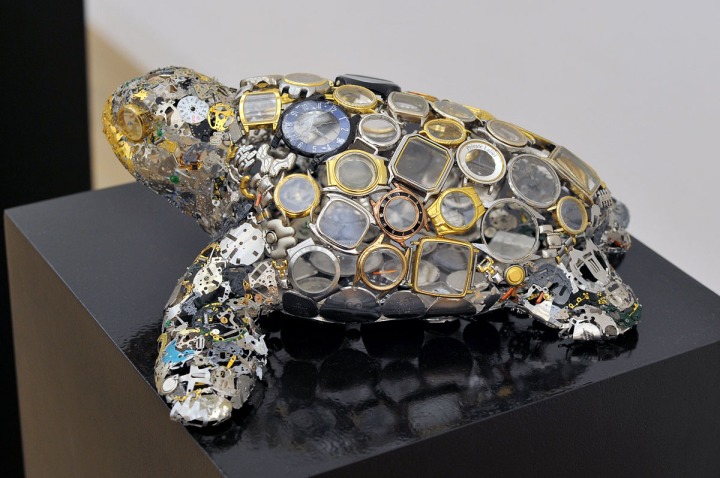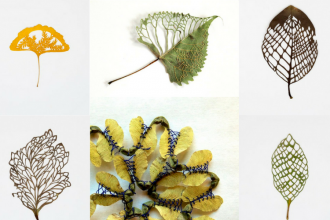Ancient civilisations have always had clever ways to tell the time, be it the prehistoric Europeans with their stone circles (such as England’s Stonehenge) or the Egyptians with their sundials that are still used today (albeit more as exotic relics of the past or artistic pieces, rather than to serve their true purpose). Necessity, as they say, is the mother of invention and the strong innate need for humans to measure and record time ensured that nearly every civilisation has attempted to do so. This has slowly grown into the art of timekeeping as we know it today.

The Clepsydra model
The ancient Greeks were the first to have a proper and reliable system to tell the time, since sundials tended to be influenced enough by other factors to cause errors in their reading. They were introduced to ‘clepsydrae’ by Plato who devised these water-clocks as an alarm clock for his students at the Academy as early as the third century BC. It is described as having depended on the nightly overflow of a vessel holding a steadily increasing amount of water as well as lead balls. By morning, the vessel would have floated high enough to tip over, causing the lead balls to cascade onto a copper platter. The resultant clangour would then awaken Plato’s students. The Romans copied (read: adopted) this from the Greeks, as they did with most of their culture.
The Persian Fenjaan.
By 328 BC, the Persians used water clocks that they called the fenjaan, considered to be the most accurate and commonly used timekeeping device of the time. It was a big pot full of water and a bowl with small hole in the centre. When the bowl would become full of water, it would sink into the pot, and one of the two full-time “managers” the clock required (usually village elderlies) would empty the bowl and replace it on the water in the pot. He would record the number of times the bowl sank by putting small stones into a “jarwas.” This clock was essential for Persian agricultural and irrigational practices.
The existence of the candle clocks of China was first recorded in 520 AD and they were used in Japan until the early tenth century. The melting candle was a means of determining the time at night. Incense clocks came up immediately after and supposedly were invented in India, despite being found in China and their usage is reported till date in parts of Japan, since the script on these clocks was Devanagari and not Chinese. The reliability on these clocks was so absolute that Geishas in Japanese culture were paid for each incense stick that burned out in their presence, and this practice continued till 1924.

An early candle clock
The hourglass arrived in 1338 in Italy as a symbol of European rationality and structure. It was one of the few reliable timekeeping devices at sea and was developed extensively by explorers such as Magellan. This was the first step in the movement towards the mechanical since around the same time, in the eleventh century, the first mechanical clocks were used and operated by Christian monks in Medieval Churches. This was a privilege allowed to the pious and elite and was treated as a delicate art. However, demands for the luxury of having a clock in one’s home grew and led to the invention of the pendulum clock. Galileo Galilei in 1582 investigated the swing of the pendulum and realised it could be used to regulate a clock. The large grandfather clocks based on this model were placed in upper class European living rooms and had to be wound every day–a pain they could live with in exchange for the style statement that were these clocks.

An Italian hourglass, traditionally wooden.
Growing innovation and the invention of the spring balance (thank you, Robert Hooke!), along with a need for miniaturisation of clocks, led in 1675 to the invention of the pocket watch. These were a real status symbol and are considered till today to represent class and gentlemanly sophistication. Crafting the intricate and beautiful pocket watches is still considered a revered art. Its model has today evolved into the modern day wristwatch, which is also a delicate and understated symbol of suave style. The invention to top them all, though, came in 1973, with the introduction of the digital watch. This made life easier for anyone who ever needs to tell time and changed the way we look at our watches (literally).

Who knew gears could be this attractive?
1975 was a year that brought further innovation into the industry with Tiffany taking a swing at calculator watches- due to the mass lack of trust in calculators. They quickly rethought their model and introduced an economy version however, which became far more successful. Both Sting and Michael J. Fox wore and loved them! Though these are now a relic of the past, they’re still around as collectors’ items and just cool things maths nerds like to gush over. Of course, discussions of contemporary technology are never complete without a mention of Apple; love the company or hate it, they’ve left their mark everywhere. The Apple watch however, is actually not the first smartwatch to hit the markets, though it is the newest, most successful, most hyped and high-end. The Hamilton Watch Company in 1972 first came up with a model called the ‘Pulsar,’ which led the smartwatch revolution.

Calculator watches, subscribing to the Steve Jobs-like notion of even the invisible parts being aesthetically appealing

The sophisticated Apple watch
DECONSTRUCTING THE MODERN CLOCK
After tracing gear-by-gear the struggle for accuracy and finally arriving at the assembly of the watch of today, it seems almost painful to have it taken apart. But when looking at the works of the modern artists that deconstruct these elegant timepieces and come out with something unbelievably more beautiful, it all seems worth it. Contemporary artists today, tired of the Victorian ideologies of structure and rigidity, are protesting this by creating new, complex objects from old parts of clocks and watches. The first idea when thinking of clocks in art, naturally, is Salvador Dali’s ‘The Persistence of Memory,’ one of the most famous works of Surrealism, placed firmly in the midst of the movement that sought to release the creative potential of the unconscious mind. Modern works seem to echo and revive this sense of creativity with their steampunk elements going against traditional norms. The artists featured below use this to keep the art of clockmaking alive.

Salvador Dali, The Persistence of Memory.
1. When Time Can Fly
Steampunk art features technology and aesthetic designs inspired by 19th-century industrial steam-powered machinery. Parts of old watches therefore fit right in, and young artists are seeking to exploit this to the fullest. To appreciate one such modern artist, Sue Beatrice, one does not need to be a steampunk fan. Using the smallest components from repurposed antique pocket watches and other time pieces, the New-Jersey based artist assembles curious sculptures, most of which are representations of animals. Her works celebrate nature and her little act of defiance- in creating magical figures out of parts that are typically supposed to impose ordered structure- is the mark she wants to leave on the world.

Image Courtesy- Sue Beatrice.
2. Can I get a Watt-Watt?
Chicago-based jeweller Justin Gershenson-Gates grew tired of making jewellery one day and decided to try his hand at sculptures made of mechanical parts. He’s never looked back since, and makes insects out of old watch parts and lightbulbs, earning his living by selling the pieces on his Etsy page. He makes entire creatures in a single sitting- truly remarkable given that it takes him hours (up to twelve) to complete each one.


Image Courtesy- Justin Gershenson-Gates
3. Steampunktual
Artist Dan Tanenbaum constructs amazing miniature motorcycles using nothing but watch parts. He primarily shares his work on his Facebook page, where he shares these sculptures as well as humanoid figures in various “realistic” poses as he calls them. His work is so far purely recreational but Tanenbaum has been considering selling his pieces online, so keep an eye out for these!


Image courtesy- Dan Tanenbaum
4. A Hare-ey Tale
Japanese sculptor Natsumi Honda from Tama Art University has welded together by hand animal sculptures of a hare and a turtle (yes, like the story!) using primarily watch faces and dials. His sculptures titled ‘Time to be Included‘ used only parts of old watches and was more of an environmental statement than one on structure (unlike the other artists featured here).

The Hare

and The Turtle
Image Courtesy- Tokyobling
5. The Time Is Now
Krakow-based artist Jacek Majerczak creates elegant medallions and other jewellery using old watches. Majerczak uses only paint, leaves, old envelopes and resin- other than watches and stone, of course.


Image Courtesy- Jacek Majerczak
6. The Clockwork Octopus
Russian artist Igor Verniy breathes life into mechanical clockworks by creating beautiful, delicate animals. He uses old car parts, watches and electronics to come out with his breathtaking creations. His attention to detail is as strong as can be and his steampunk work is sometimes available for sale online, on his Etsy page.


Image Courtesy- Igor Verniy
7. Lighten Up!
As part of Milan Design Week Paris-based architect Tsuyoshi Tane teamed up with Citizen to create “LIGHT is TIME,” an immersive installation of 80,000 watch base plates. He hung these glowing disks off strings from a ceiling in order to create “a space-orchestration where light will fill the space, composing, through sound and vision, a sense of light and time never experienced by humanity before.” The result? A shimmering, ethereal, delicate slice of paradise.


Image Courtesy- DGT Architects
8. Carpet Diem!
Heidi Violet, a Brussels and Shanghai-based artist produces large tapestries made entirely of watches joined together carefully. She attempts to take the phrase ‘fabric of time’ to a different level altogether in her representation of household staples. Maya Kramer explains, “Over the course of the exhibition, the watches will inevitably malfunction, losing their synchronicity and eventually sounding like an out of rhythm and out of tune orchestra. Thus, the march of time is subtle yet unceasing and its cumulative effect results ultimately in dissolution and increased chaos”.

Image Courtesy- Boom.com
The innovation and desire to create is so instinctive to humans that it has kept this art alive through the ages. Humans have been keeping time ever since they could first grasp what time meant, and are still seeking revolutionary new ways in which to record it. Creativity never comes to a close and this is why no art ever truly dies. Along every step of the way, inventive and original ideas have created a positive change that have moved clock-making as an art forward, and this progression is continuing even today.











